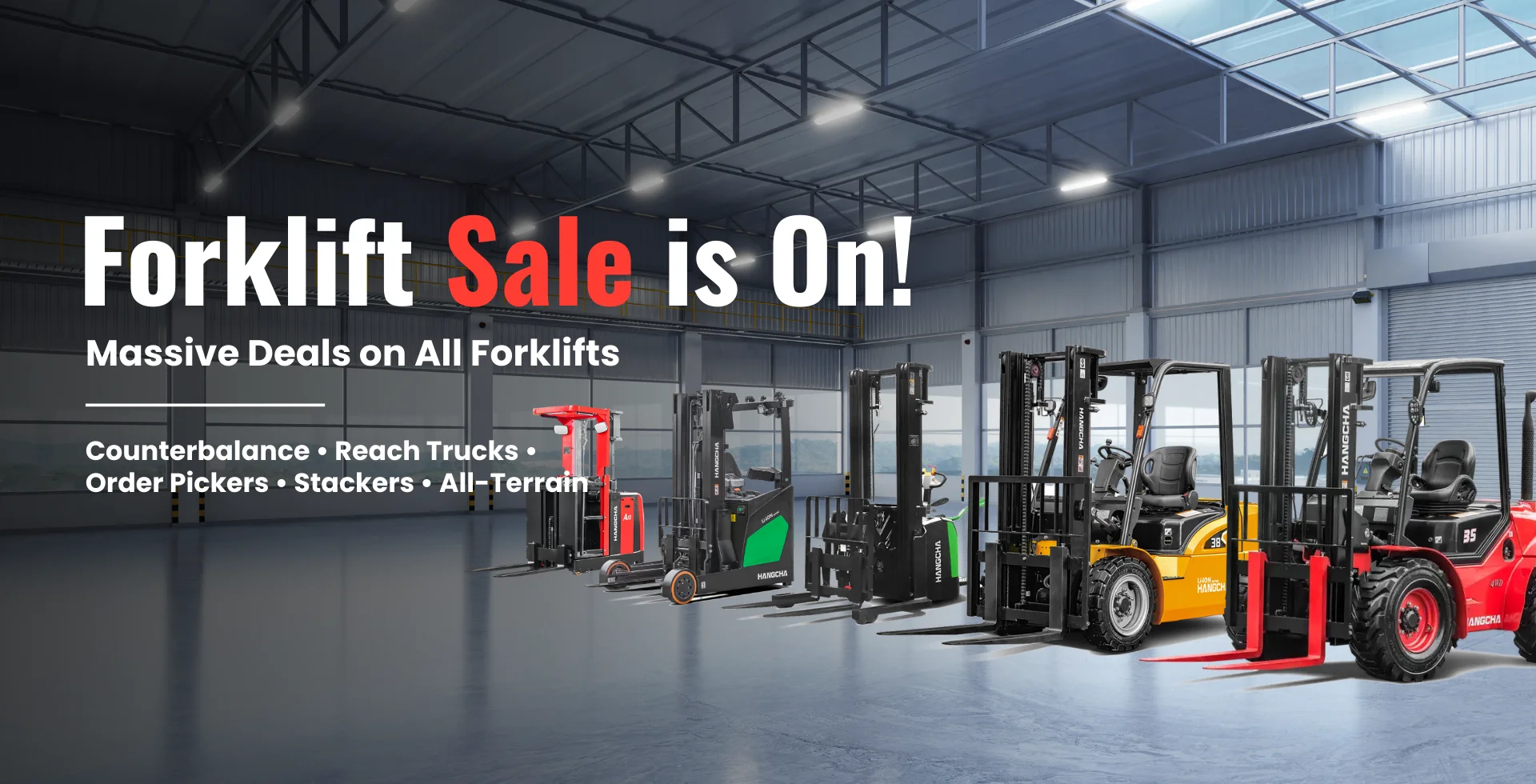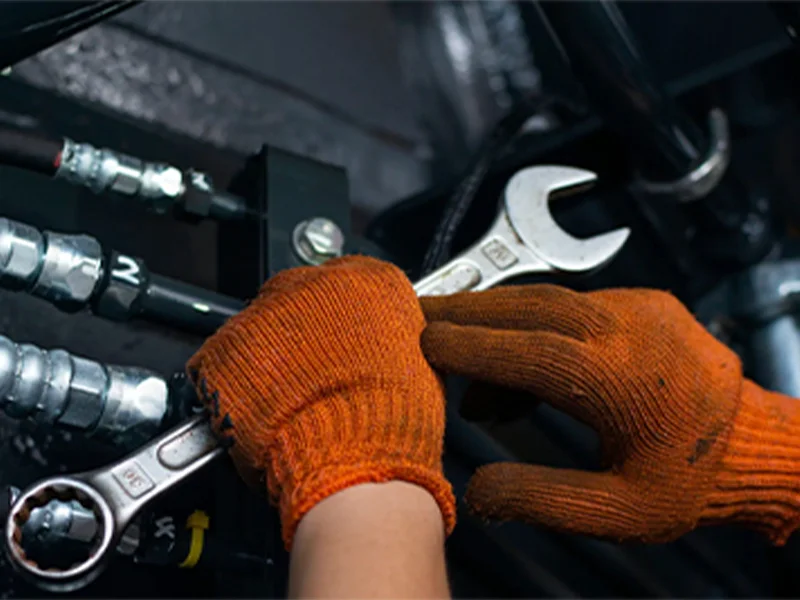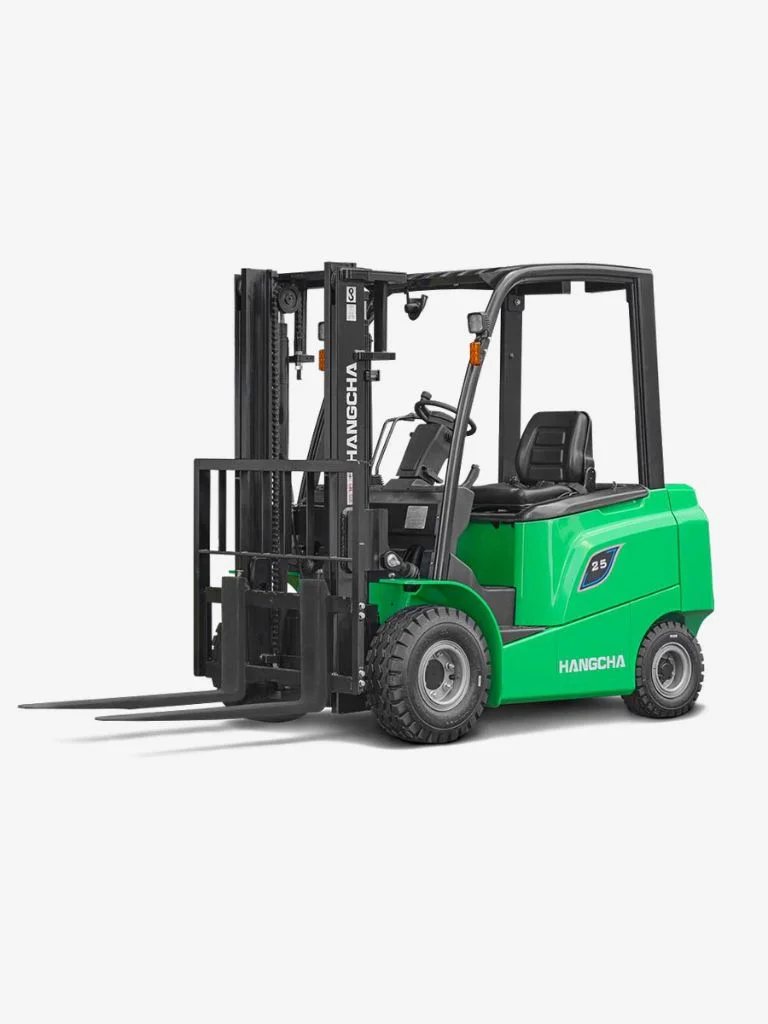

Our Range: Forklifts
All Forklift


I was speaking to a couple of companies about buying an Electric Walkie Stacker for my small warehouse. Mark from DJJ Equipment by far gave the best Customer experience compared to other similar companies I engaged when looking at different product options. Mark was very Customer focused & extremely happy to help with any information to assist me. Very polite & friendly gentleman. After Sales support was with service was 1st class as well.
Regards, Steve Atkin
Pallet Pickups WA
It was purchased from Mark in Perth.
Machine is working great and the amount of usage my husband is getting out of the loader and clearing of parts of our property, ripping out the prickle bush, acacia weed and the moving of rocks has made a massive difference to our property in such a short time!
We chose DJJ Equipment over another similar suppler due to Marks knowledge, friendly customer service and can say the ongoing after sales support to
queries has been fantastic!
Can really see us getting our moneys worth out if this machine for many years to come, so pleased we purchased with DJJ Equipment!
Highly recommend!
Loader LM946 is performing well.
I have to say that Mark and the staff at the Perth depot were remarkably helpful and knowledgeable.
Nothing was too much trouble for them.
Very impressed with the service.
And I come back for another pallet jack today at DJJ.
DJJ’s service had been excellent all the time, I am highly recommend for DJJ’s forklift product.
I couldn't fault them bit they where Awesome Thankyou guys and Thankyou Mark for your support Excellent Work.
,
.
Parts

Service

We offer maintenance and after-sale service to all of our customers. If you have any questions or need assistance, you can contact us through email, phone, Facebook, video, or other methods.We promise prompt responses to ensure your repair needs are addressed quickly and efficiently.
Finance

Our in-house finance team provides professional service all across the country, along with quick approvals, no/low doc finance options, and flexible leasing plans. We want to help you get your hands on a new loader as soon as possible and pay for it later. With monthly payments of only a few hundred dollars, you can own a brand new loader and get your job done!
Customization

One of our greatest strengths is our ability to customize machinery and attachments to meet the specific needs of our clients. Whether you are in construction, agriculture, or any other industry, we can design and build equipment that is tailored to your unique requirements.
Buying the Right Forklift: A Quick Guide
Types of Forklifts for Warehouses
Order Picker Forklift: Specialized for warehouse and distribution center use. Features a lifting platform, ideal for selecting or unloading items at various heights. Load capacity: 1-2 tonnes. Best used on leveled ground, optimizes stock picking in warehouse corridors.
Electric Three-Wheel Counterbalance Forklift: Electrically powered with a counterbalancing weight. Benefits include a smaller turning radius, making it suitable for tight spaces.
Electric Four-Wheel Counterbalance Forklift: Similar to the three-wheel variant but offers greater stability, especially when turning. Load capacity: 1,000 to 3,500 kg. Recommended for heavy lifting in warehouses or construction sites.
Side-Loading Forklift: Designed for lateral loading/unloading, ideal for long items like pipes or timber.
Multi-Directional Forklift: Capable of moving in multiple directions, enhancing maneuverability in tight spaces and corners. Suitable for operations requiring multi-directional handling.
All-Terrain Forklift: Built for off-road conditions with large pneumatic tires. Load capacity: 1 to 50 tonnes. Ideal for outdoor construction, agriculture, and industrial applications requiring rugged terrain capabilities.
Power Source: Choosing the Right Energy for Your Forklift
Selecting the appropriate power source for your forklift is pivotal to align with your operational demands and efficiency goals. This section explores the three primary power sources for forklifts: LP gas, electric, and diesel, each with its unique advantages and considerations. Understanding these options will assist you in making a cost-effective and performance-oriented decision.
- LP Gas Forklifts: Powered by liquefied petroleum gas, LP gas forklifts are versatile for both indoor and outdoor use. They offer a lower initial cost, making them a budget-friendly option for various material handling tasks.
- Electric Forklifts: Electric forklifts, known for their eco-friendly operation, are ideal for indoor environments where minimizing emissions and noise is crucial. While higher in initial cost, they offer long-term savings in fuel expenses.
- Diesel Forklifts: Diesel forklifts provide robust performance for heavy-duty outdoor tasks. They typically have a lower upfront cost than electric models but may incur higher fuel costs, especially with extensive use.
Performance Parameters: Key Factors for Forklift Efficiency
In the realm of forklift selection, understanding performance parameters is pivotal to ensure your chosen equipment meets the demands of your material handling tasks. This section delves into the critical performance factors: Lift Height, Load Capacity, Forklift Weight, and Tires. By evaluating and optimizing these parameters, you can enhance your forklift’s efficiency and effectiveness.
- Lift Height: Lift height, the maximum vertical distance a forklift can raise a load, plays a significant role in storage and handling. Consider your storage rack heights and typical lifting requirements when selecting a forklift.
- Load Capacity: Load capacity, indicating the maximum weight a forklift can safely handle, directly impacts its usability. Assess your heaviest loads and choose a forklift with a capacity that exceeds these requirements.
- Forklift Weight: The weight of the forklift itself is vital for stability and facility compatibility. Evaluate your work environment’s floor load limits to ensure the forklift’s weight aligns with structural considerations.
- Tires: Tires are a critical element, with options like solid and pneumatic, each suitable for specific conditions. Solid tires offer stability and durability for indoor or smooth surface use, while pneumatic tires excel in outdoor and rough terrain applications.
Attachments: Enhancing Forklift Versatility
When it comes to forklifts, versatility is key. This section explores a variety of forklift equipment and attachments, each designed to expand the capabilities of your forklift. From booms to fork positioners, hook plates, lifting devices, drum handlers, rotators, and more, these attachments offer specialized solutions to address diverse material handling challenges.
- Boom / Telescopic Boom: Extend your forklift’s reach for tasks like loading/unloading elevated shelves and reaching over obstacles.
- Fork Positioners : Adjust fork width hydraulically for efficient handling of loads, eliminating the need for manual adjustments.
- Hook Plate: Facilitate secure lifting and transportation of items with hooks, straps, or handles.
- Lifting Attachments: Safely lift and transport irregular or delicate loads using devices like jibs, lifting beams, or spreader bars.
- Drum Side Attachments: Specialized attachments for lifting and transporting drums, commonly used in industries handling liquids or powders.
- Rotator Attachments: Rotate loads to desired angles for positioning or material dumping, particularly useful for container emptying.
- Roll and Barrel Attachments: Designed for handling cylindrical loads such as rolls, barrels, or pipes.
- Pole Attachments: Lift and transport long, cylindrical loads like steel or plastic tubes.
- Man Basket Attachments: Secure platforms for personnel to work at heights, ensuring safety and accessibility.
Safety and Comfort
Safety and operator comfort should never be compromised when choosing a forklift. Ensuring a secure and comfortable working environment not only promotes efficiency but also reduces the risk of accidents. In this section, we’ll explore the safety features and ergonomic enhancements that should be at the top of your checklist when selecting a forklift.
Safety Features
- Enhancing Visibility: Ensure safety with features like wide-view masts and strategically placed mirrors, essential for preventing accidents in busy warehouses.
- Cutting-edge Safety Technologies: Advance safety with state-of-the-art technologies including backup alarms, anti-collision systems, and automatic braking. Crucial for enhancing safety in high-traffic or low-visibility environments.
Operator Comfort
- Ergonomic Seating: Operator well-being matters. Ergonomic seats reduce fatigue during extended shifts, contributing to efficiency and satisfaction.
- User-friendly Controls: Precise, responsive, and intuitive controls enhance efficiency and reduce accident risks, ensuring smooth operations.
- Thoughtfully Designed Cab: A well-thought-out forklift cab considers operator comfort with climate control, easy entry/exit, and noise reduction. A comfortable environment promotes focus and safety.
Budget: Balancing Costs for Long-term Sustainability
Budget considerations play a crucial role in your forklift selection process. Beyond the initial purchase cost, you must account for ongoing expenses, such as fuel, maintenance, and storage. In this section, we’ll guide you in balancing your budget while making decisions that lead to long-term sustainability and cost-effectiveness.
Initial Purchase Costs
- Cost of Fuel: Explore fuel types (LP gas, electric, or diesel) to strike a balance between cost and efficiency, considering usage frequency and environmental impact.
- Storage Expenses: Evaluate storage needs for different forklift sizes, accounting for indoor/outdoor considerations and protective measures against adverse weather conditions.
- Maintenance and Service Costs: Create a comprehensive maintenance budget for routine servicing, inspections, and potential repairs, following manufacturer recommendations for longevity and efficiency.
Service & Maintenance: Keeping Your Forklift Running Smoothly
Once you’ve chosen the perfect forklift, ensuring its continued reliability is essential. This section delves into the after-sales services and maintenance aspects you should consider. From warranty coverage to genuine parts availability, we’ll help you maintain the performance and longevity of your forklift.
- Warranty Coverage: Understand warranty coverage and its terms to ensure critical components are included, and review the frequency of warranty service offered.
- Genuine Parts Availability: Verify the use of original manufacturer or reputable brand parts for superior quality and performance, and consider proximity for part availability.
- Equipment Upgrades: Inquire about the availability of technical support for upgrades and the timeliness of upgrade offerings.
- Repair Service Centers: Evaluate the proximity of service centers to your project sites for reduced downtime and expedited repairs.
- Consultation Services: Prioritize suppliers with functioning after-sales service hotlines for effective communication and issue resolution.
- Training Programs: Ensure the supplier provides operation manuals and basic safety training resources for novice operators, enhancing efficiency and safety.
Conclusion: Elevating Your Forklift Decision
Choosing the right forklift is pivotal for efficiency, safety, and budget. We’ve covered various aspects in this guide, helping you make an informed choice that fits your needs. Prioritize safety, efficiency, and sustainability.
Our experts are ready to assist you in this critical decision. With the right forklift, your material handling tasks will be smoother and safer, benefiting your business. Make your forklift decision wisely.


















.webp)